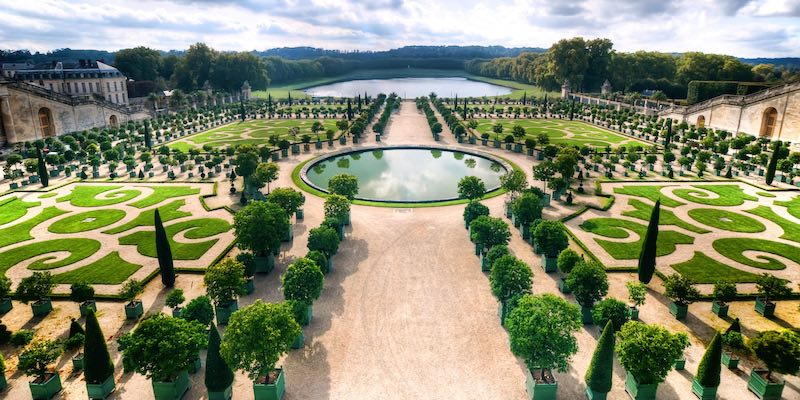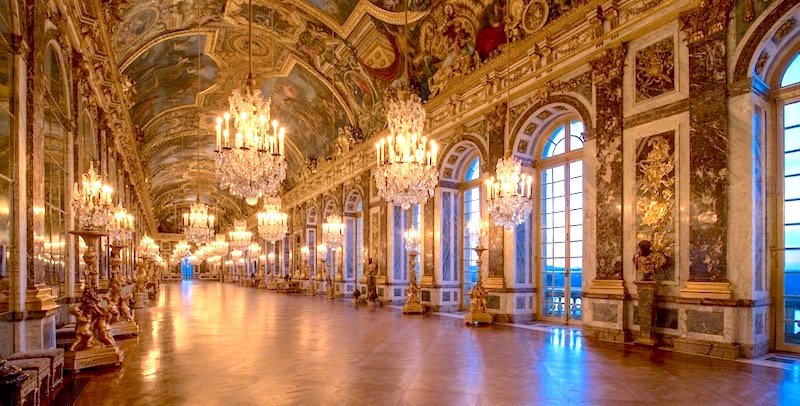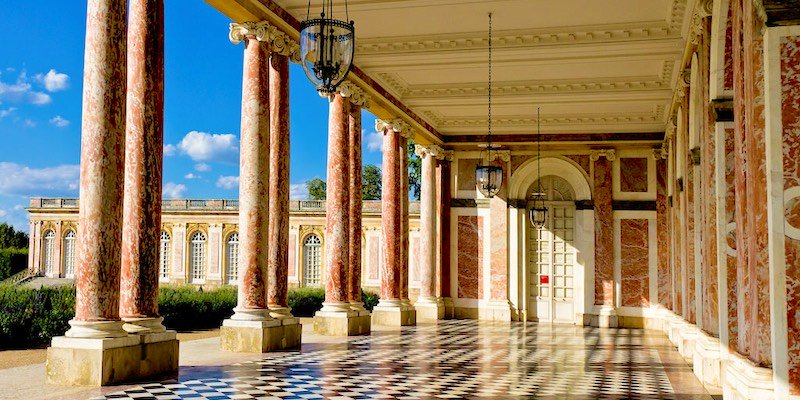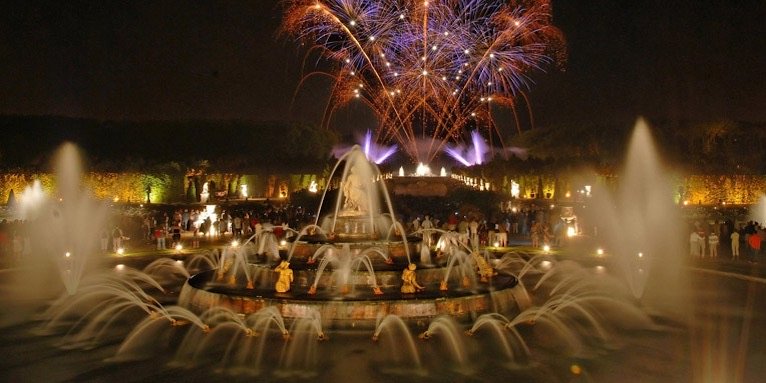Versailles – The History & Highlights Of This Grand Royal Estate
Versailles is the most opulent and extensive royal estate ever created. Begun by Louis XIII, it was his son, the Sun King, who transmogrified it into the vast extravaganza it is today. Before you hop in the luxury Eurovan to head out to the estate, it's good to know a little bit about the history and background of Versailles.
![]()
Our Top-Rated Versailles Experiences
1. The Best of Versailles with Priority Access & Gardens… Our #1 choice
2. Versailles Guided Half-Day Tour with Skip-the-Line Entry… With an expert interpreter/guide
3. Full-Day Bike Tour + Skip-the-Line Chateau Access… Visit Versailles on two wheels
4. Visit Versailles + Monet's Gardens at Giverny… On one glorious day trip
A Short History of Versailles
![]()
![]()
1623
When the château was built, Versailles was a village. Today it's a wealthy suburb of Paris.
In 1623 French king Louis XIII built a small chateau as a hunting lodge. But it was his son, Louis XIV, who began a massive expansion in 1661. The first phase of the work was designed by the architect Louis Le Vau. After his death in 1670, the work was completed by his assistant, François d'Orbay. Painter Charles Le Brun designed the elaborate interior decoration, and André Le Nôtre landscaped the extensive gardens. Together they collaborated on designing the many fountains and the placement of the countless statues.
1678
Architect Jules Hardouin-Mansart oversaw the second phase of expansion (1678 to 1715) when the enormous north and south wings were added. He also built the Petites and Grandes Écuries (stables) and the chateau known as the Grand Trianon. Louis XVI later gave the Trianon estate, palace & gardens to his queen, Marie-Antoinette, and built for her the private Théâtre de la Reine and the Hameau, her fantasy farm.
1682
In 1682 Louis XIV proclaimed Versailles to be his principal residence, moving the center of political power from Paris to what was then the countryside. The good times continued until 1789 when the royal family was forced to return to Paris at the start of the French Revolution.
1833
After the Revolution, Versailles fell into disrepair. Napoleon did some restoration work in 1810 but the principal restoration was initiated by Louis-Philippe in 1833. He transformed the palace into what is essentially a museum dedicated to French history.
![]()
Romantic Dinner Cruises In Paris
|
VIP Dinner Cruise with Bateaux Parisiens |
Dinner Cruise by Maxim's of Paris |
|
VIP Dinner Cruise with Bateaux Parisiens |
Five Highlights of Versailles
![]()
![]()
1. Louis XIV's Grand Apartments, Chamber & The Hall Of Mirrors
Seven rooms make up the Sun King's Grand Apartments; as you progress from one to another you will be dazzled over and over again by the opulence. In the Salon de Diane is the king's billiard table. Apparently, he prided himself as a good player. Next to the table were two platforms where ladies would stand to applaud his skill.
Of course there's the King's Chamber and the stunning 75-meter-long Galerie des Glaces (Hall of Mirrors) with 357 mirrors. The final room is the Salon d'Hercule, which features the magnificent ceiling fresco, The Apotheosis of Hercules. The king's official painter, Francois Lemoyne (1688 - 1737), took years to finish the painting, but apparently wasn't too happy with it; he committed suicide shortly after its completion.
![]()
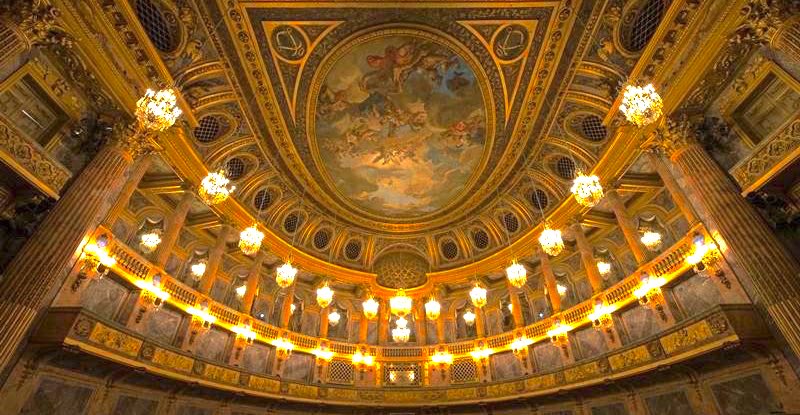
![]()
2. L'Opera Royal
When it was completed the Opera Royal (created for the marriage of Louis XVI and Marie-Antoinette) was a marvel of engineering and Europe's largest theatre, with enough seats for 1,300 spectators. The final stage of construction began in 1768, when hundreds of laborers worked around the clock. The excellent acoustics are due to the all-wood construction and mirrors on the upper level. The first plays to be performed were Persée by Jean-Baptiste Lully and Athalie by Jean Racine.
![]()
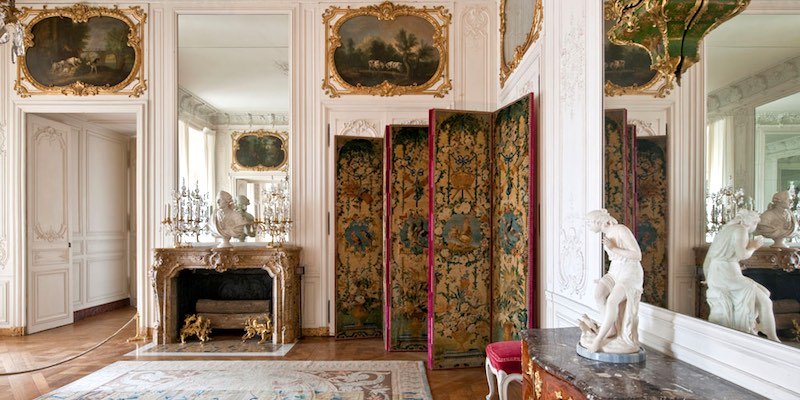
![]()
3. Les Appartements des Mesdames
Named for Louis XV's six daughters, these ten apartments have intriguing stories. In one, a harpsichord is a testament to the proficiency of his daughter Victoire; Mozart dedicated his first six sonatas for the instrument to her. Another room, the Cabinet de Madame Adelaide, is where Louis XV's mistress Madame de Pompadour lived. She was said to "have an extreme need for the studied elegance that comes from luxury". But then, don't we all?
![]()
![]()
4. Le Petit Trianon
Separate from the main chateau, the classical Greek-styled Le Petit Trianon was where Marie-Antoinette got away from it all. (She never really fit into court life.) Its marvelous features include the main hall, with pristine white and green marble-tiled floor; the Grand Escalier's wrought-iron and bronze-gilded banister where you can still see her Highness' initials; and a whole room dedicated solely to warming dinner plates! Surrounding the Trianon are Marie-Antoinette's gardens and the Hameau, her play farm.
![]()
![]()
5. The Gardens & Les Grandes Eaux Musicales
Louis XIV considered Versailles' gardens equally as important as the chateau, which explains their size and intricacy. Hills were flattened, marshes were drained and whole forests were relocated in the landscaping process, which required 40 years and thousands of men, including whole army regiments. The resulting flowerbeds, pathways, fountains, statues, hedgerows, and countless shrubs and trees are a gardener's idea of heaven.
You also won't want to miss the Parterres d'Eau — two huge, rectangular ornamental ponds which both light up the Chateau and reflect its architectural glory
From the end of the March to the end of October, there are musical fountain shows — Les Grandes Eaux Musicales — that take place across the garden's water features, combining light and water with Baroque classical music.
Paris Planning Guides
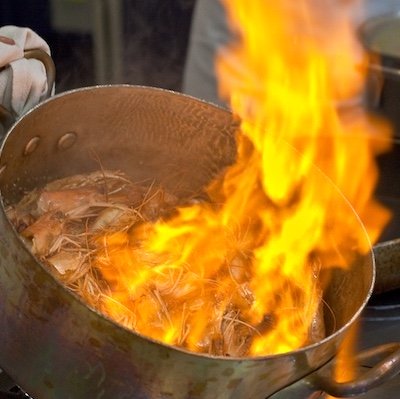 Top 10 Food Tours
Top 10 Food Tours |
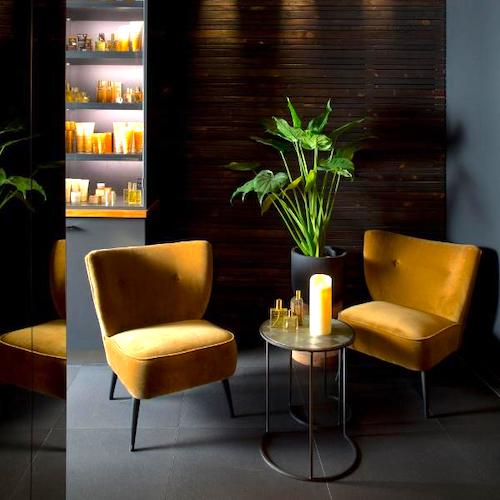 Top Montmartre Hotels
Top Montmartre Hotels |
 Paris Taxi Guide
Paris Taxi Guide |
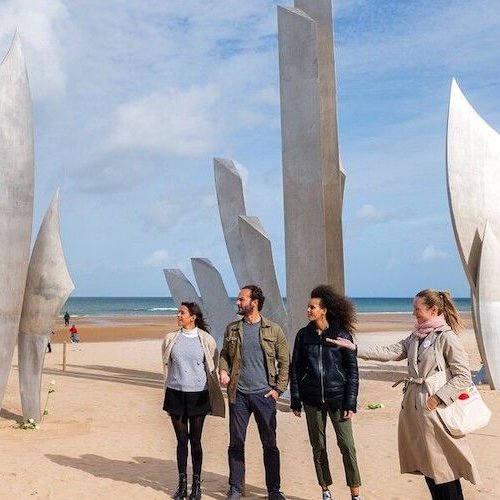 Historic D-Day Tours
Historic D-Day Tours |









